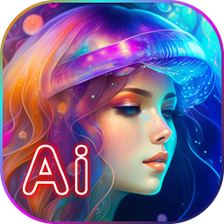Artificial Intelligence (AI) has swiftly built-into numerous areas of our lives, transcending traditional boundaries to guide fields as diverse as healthcare, finance, and entertainment. One particularly captivating area where AI is making significant strides is incorporated in the realm of art. AI art, made up of the assistance of algorithms and machine learning techniques, challenges conventional notions of creativity and authorship. This informative article delves to the burgeoning world of AI art apps, examining their impact, capabilities, as well as the broader implications for the future of artistic expression.

The increase of best ai art apps
AI art applications leverage advanced algorithms to create, manipulate, or enhance images, often producing results that blur the lines between human and machine creativity. These apps vary from simple tools that apply filters to photographs to stylish platforms capable of generating entirely new artworks according to input parameters and datasets. One notable example is DeepDream, put together by Google, which transforms images into dream-like compositions through neural network processing.
Another prominent player is Prisma, which became popular for its ability to apply artistic styles to photographs, mimicking the strategy of famous painters like Picasso or Van Gogh. Through the use of neural networks trained on vast collections of artwork, Prisma enables users to rework mundane snapshots into vibrant, stylized creations.
Creating Art with AI
The whole process of creating art with AI typically involves providing the system with input data-such as images, text descriptions, as well as audio-and allowing the algorithm to interpret and generate visuals depending on learned patterns and designs. This approach not merely democratizes artistic creation but additionally raises intriguing questions regarding the nature of artistry and authorship inside the digital age.
Apps like DALL-E by OpenAI exemplify the cutting-edge capabilities of AI in art creation. DALL-E can generate highly realistic images from textual descriptions, including "an armchair in the shape of an avocado." This ability to translate abstract concepts into visual form demonstrates AI's possible ways to push the bounds of imagination and creativity.
AI being a Collaborative Tool for Artists
As opposed to replacing human artists, AI is increasingly considered a collaborative tool that enhances creative workflows. Artists can leverage AI to understand more about new styles, generate preliminary sketches, or automate repetitive tasks, letting them focus more on conceptualization and experimentation. This symbiotic relationship between AI and human creativity fosters innovation and opens new avenues for artistic expression.
For example, Runway ML provides artists with accessible tools to integrate AI models into their creative processes seamlessly. Whether generating procedural textures, enhancing animations, or experimenting with generative adversarial networks (GANs) to create novel artworks, Runway ML empowers artists to understand more about AI-driven possibilities without requiring extensive technical expertise.
Ethical Considerations and Challenges
However, the mixing of AI in art also raises ethical considerations and challenges. Issues such as algorithmic bias, ownership of generated artworks, and the authenticity of AI-assisted creations are subjects of ongoing debate. As AI art grows more prevalent, addressing these concerns becomes essential to ensure fair practices and maintain the integrity of artistic expression.
Furthermore, the democratization of art through AI might disrupt established art markets and challenge traditional notions of worth and authenticity. Questions regarding the commercial viability of AI-generated art and it is impact on the skill ecosystem remain pertinent as technology is constantly on the evolve.
The way forward for AI Art
Looking ahead, not able to AI art appears promising yet complex. Advancements in machine learning, in conjunction with increasing computational power, will probably lead to modern-day AI art applications able to produce even more compelling and nuanced artworks. Moreover, interdisciplinary collaborations between artists, technologists, and ethicists is going to be essential in shaping the next where AI contributes positively to artistic innovation and cultural enrichment.
As AI is constantly on the evolve, so too will its impact on art and society at large. Whether augmenting human creativity, challenging traditional practices, or sparking new artistic movements, AI art apps represent a fascinating intersection of technology and culture. Embracing this intersection with thoughtful consideration and ethical awareness will probably be key to harnessing AI's full potential while preserving the essence of human creativity in the digital age.
Conclusion
AI art apps exemplify the transformative power technology within the realm of artistic expression. From generating novel artworks to enhancing creative workflows, these applications underscore AI's growing relation to diverse industries, including art and style. As we navigate this rapidly evolving landscape, embracing innovation while addressing ethical concerns will probably be essential in fostering a future where AI enriches, rather than diminishes, the creative endeavors of humanity.
